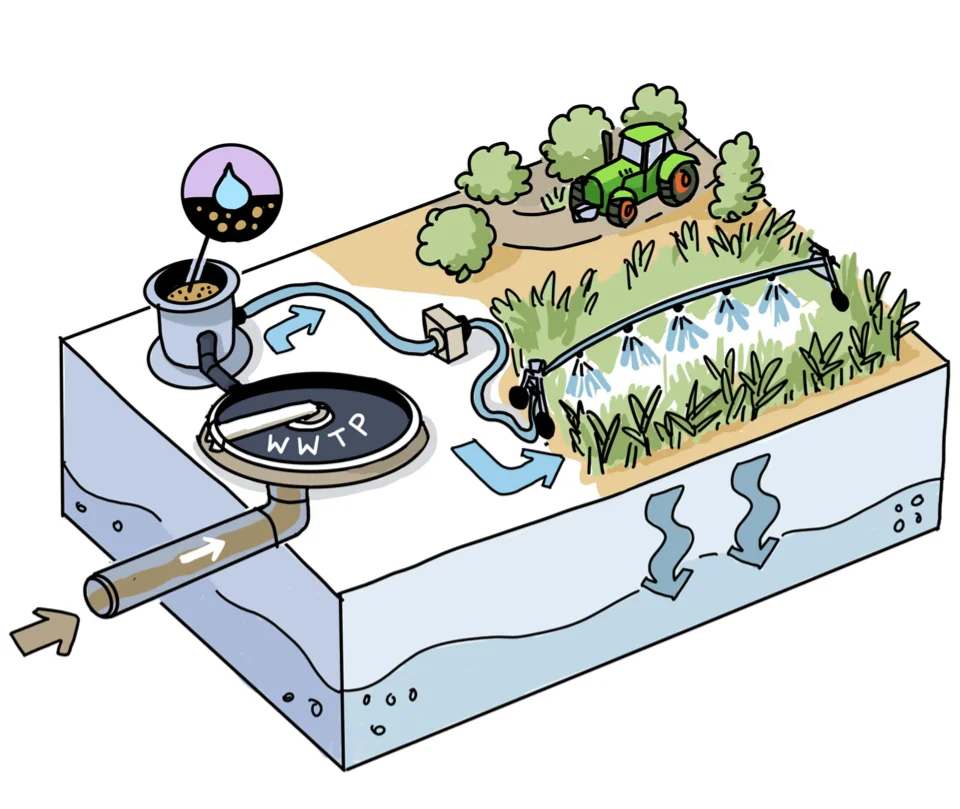Bornholm island in Denmark
On the island of Bornholm, treated wastewater from a wastewater treatment plant is purified using a slow sand filter (SSF) to make it suitable for the irrigation of agricultural land. An important component of this long-established filtration technology is what is referred to as a “biofilm”, a biological layer in the sand filter that contributes significantly to the reduction of microorganisms and the improvement of water quality. This layer must be removed and the filter cleaned on a regular basis.
In certain terrains, the SSF does not require a pumping mechanism, which makes it an energy-efficient solution. In addition, the water is distributed to neighbouring farms using simple, inexpensive plastic pipes.
- Location: Svaneke, Bornholm island (Denmark)
- Water source: Treated wastewater from wastewater treatment plant
- Type of treatment: Slow sand filter (SSF)
- Target water quality: Quality class D according to Directive (EU) 2020/741
- Utilisation: Irrigation of agricultural land in the immediate vicinity of the wastewater treatment plant
- Return to natural cycle: Infiltration
- Responsible: BEOF – Bornholm’s Energy & Utility Co. A/S
- Open for visitors: September 2024
Further information on the pilot measure
Technical-organisational concept (current status)
(pdf, 3,9MB)
These slides provide a more detailed overview on the pilot measure.
The evolution of the concept (until today)
(pdf, 5,0 MB)
These slides give an account of the work process behind the chosen technical-organisational concept, incl. considerations, recommendations and decisions taken at different stages. Scroll through the slides to chronologically follow the iterative “development journey” of the pilot measure step-by-step, from the initial idea to its present status!
Helpdesk / Contacts for further information:
Daniel Sereth Larsendsl@beof.dk+45 56 900 043

